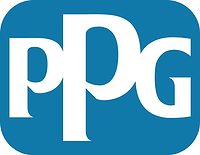PPG Reports Fourth Quarter and Full-Year 2022 Financial Results
.jpg?1670827328)
PPG has reported financial results for the fourth quarter 2022 and full-year 2022. For the fourth quarter, the company’s net sales totaled $4.2 billion, up 5% in constant currencies driven by higher selling prices. The company’s reported earnings per diluted share from continuing operations (EPS) was $1.01, and adjusted EPS was $1.22. PPG’s margin recovery with segment earnings growth was more than 20% year-over-year, despite more severe commercial and supply disruptions in China than original guidance.
“We continued to make good progress on our focus to achieve full operating margin recovery, as year-over-year earnings improved in both segments despite more acute pandemic-related demand disruptions in China,” said Tim Knavish, PPG president and chief executive officer. “This earnings improvement was driven by aggregate selling price increases that totaled 19% on a two-year stacked basis, as we remained focused on mitigating the significant cumulative cost inflation incurred the past two years.
Net sales for PPG’s performance coatings segment were $2.49 billion, compared to fourth quarter 2021 sales of $2.5 billion. Performance coatings net sales were down slightly versus the prior-year fourth quarter as lower sales volumes, the impact of divestitures, the wind down of business in Russia, and unfavorable foreign currency translation impacts were nearly all offset by selling price increases in all businesses.
Net sales for PPG’s industrial coatings segment were $1.69 billion, compared to $1.68 billion in the fourth quarter of 2021. Industrial coatings net sales increased modestly as higher selling prices across all businesses were partially offset by lower sales volumes, unfavorable foreign currency translation, and the wind down of business in Russia.
Full-year 2022 reported net sales from continuing operations were approximately $17.7 billion, up about 5% versus the prior year. Organic sales were higher by 8% driven by higher selling prices. Net income in 2022 decreased versus 2021 due to raw material cost inflation, lower sales volumes, unfavorable foreign-currency translation, and higher manufacturing costs related to supply and labor disruptions, partially offset by higher selling prices, restructuring cost savings and acquisition-related synergies.
For more information, visit: http://corporate.ppg.com/.
Looking for a reprint of this article?
From high-res PDFs to custom plaques, order your copy today!







